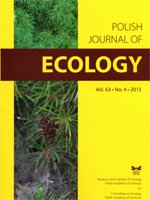Farmland bird populations declining rapidly all over Europe. Most of the knowledge is, however, from the breeding season, and much less is known about the winter period, especially from Central and Eastern Europe. We censused wintering farmland bird assemblages in West Hungary, in 2011/2012. The censuses covered semi-natural and seeded grasslands, plough fields and wheat fields. The available winter seed food was estimated for each field from the top soil and from the vegetation. We recorded 25 species with 844 individuals on the fields. Semi-natural grasslands were the most important habitats for species richness of all, granivorous, and resident species, with seeded grasslands as the second best habitat. Abundance showed similar pattern, although with no significant effect for granivorous species and for short-range migrants. Seed mass was significantly different among the habitat types, higher on seeded grasslands and seminatural grasslands than on ploughed sites and winter wheat fields. Date had a significant effect on species richness and abundance with highest values in December. There was a positive significant correlation between bird species richness and seed mass only in December. Our results strengthen former findings that changes and drivers of wintering farmland bird populations may differ between Central and West Europe, and highlight the need for further, large scale studies to provide evidence base to guide agrienvironmental programs.
How to translate text using browser tools
1 December 2015
Wintering Farmland Bird Assemblages in West Hungary
András Báldi ,
László Somay,
Anikó Kovács-Hostyánszki
ACCESS THE FULL ARTICLE

Polish Journal of Ecology
Vol. 63 • No. 4
December 2015
Vol. 63 • No. 4
December 2015
arable fields
Central Europe
food resources
habitat use
seed mass
semi-natural and seeded grasslands




